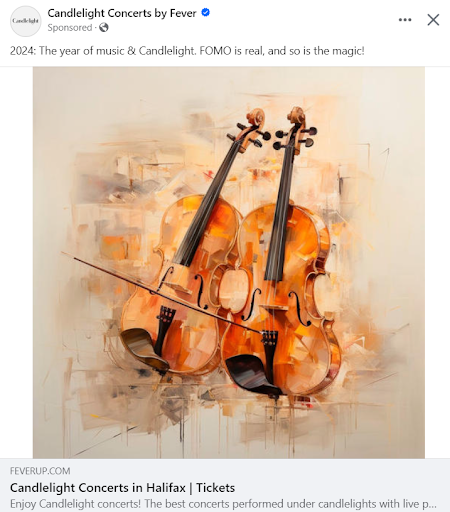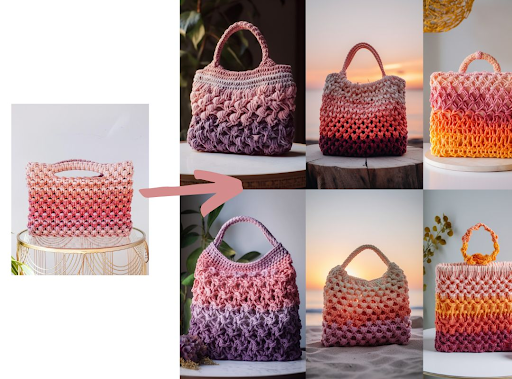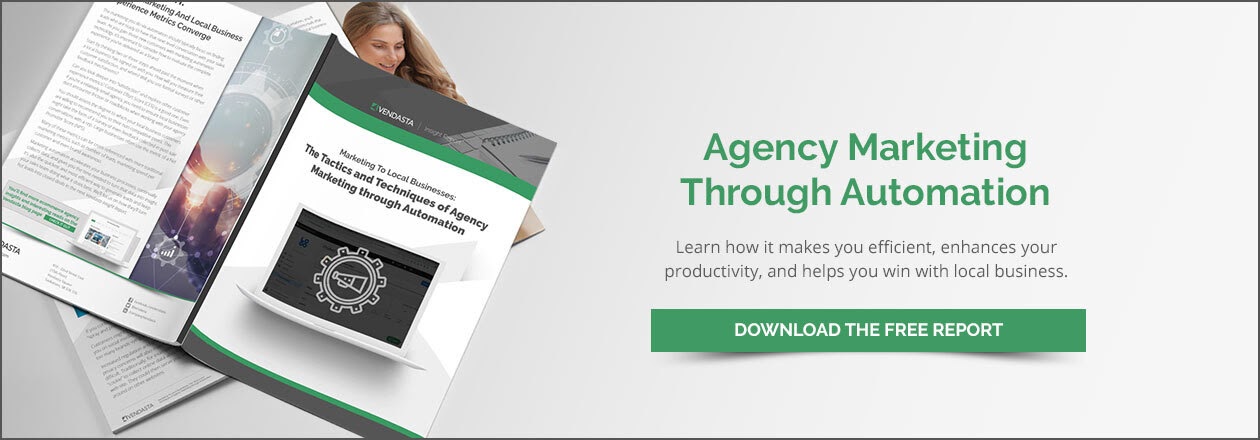A guide to make money with AI art and unlock creative potential
If you are reading this article, you’re probably trying to figure out what all the hype is about surrounding Artificial Intelligence (AI), and what it has to do with art.
Well, you probably remember back in 2018 all the news circulating about the first AI portrait and how it sold at auction for a whopping $432,500 (Artnet). While that price tag is impressive, we’ve come a long way from that odd-looking portrait, and if you can overlook an extra finger or two, AI has truly progressed by leaps and bounds—and there’s money to make from it.
Learn how automations make you efficient, enhance your productivity, and help you win with local business. Download “Agency Marketing through Automation” today.
AI art is gaining popularity in the creative industry, changing the way we think about and create photographs, design graphics, and—just in general—express ourselves. This guide explores the potential of AI-generated art and how it can be a great opportunity for artists to make money with AI art while exploring new creative avenues.
Table of Contents
- AI art tools you'll need
- How to create AI artwork like a pro
- 10 ways to make money with your AI Art
- Offer AI-generated artwork for commercial use
- Collaborate with artists and designers
- Create AI-powered marketing campaigns
- Provide AI art consulting services
- Organize AI art exhibitions and events
- Develop AI art marketplaces
- Offer AI art workshops and training
- Collaborate with influencers and social media platforms
- Provide AI art curation services
- Explore AI art collaborations with other industries
- Conclusion
AI art tools you'll need
Essential software
At the heart of AI art creation lies the software that transforms your ideas into reality. Widely used AI software like Midjourney, Jasper, and DALL-E provides artists with many options to experiment with, allowing them to craft unique and captivating pieces.
More affordable options are out there, too. The user-friendly platform Canva recently released its Magic Studio suite of applications, and Magic Media is a great option to get your feet wet and try AI art design for the first time.
Hardware requirements for AI art creation
When deciding to dabble with AI art, the right hardware can really enhance your creative experience. High-performance GPUs (Graphics Processing Units) play a big role in speeding up the computations required for AI art generation.
Artists often opt for GPUs with parallel processing capabilities to handle the huge load. This fancy term just means that the computer processes multiple things at once, rather than one at a time. Investing in a capable machine that aligns with the demands of AI art creation will help you ensure your artistic vision is realized quickly and with little headache.
Some other hardware considerations for editing and storing your art include:
- A high-quality drawing pad
- A drawing stylus with a long battery life
- A fast, reliable internet connection
- A backup external hard drive
How to create AI artwork like a pro
1. Research and inspiration
Just like any type of art form, the first thing you should do is research. The best way to discover your own unique style of AI art is to learn from others, master the techniques involved, and be inspired by others. Here are some resources to help you achieve this:
Runway ML
Description: Runway ML provides a user-friendly platform for artists to explore and experiment with various AI models, including those related to art and creativity.
Google Arts & Culture
Description: Google Arts & Culture offers a variety of tools for artists to take inspiration from, including popular works throughout history.
DeepArt.io
Description: DeepArt.io allows artists to transform their photos into works of art using deep neural networks. It's a great platform for understanding the capabilities of AI in artistic creation.
AI Art Generator by Deep Dream
Description: Deep Dream Generator lets users apply deep neural networks to their images, creating unique and sometimes very surreal artworks.
Kadenze
Description: Kadenze offers online courses, including those related to AI in art and creative applications. It's a platform where artists can learn directly from experts in the field.
2. Choosing the right AI art tool
Selecting the perfect tool can set in motion the trajectory of your creative journey. With so many options available, it's important to find an AI art tool that aligns with your preferences, goals, and skill level. Here are some pointers to help you navigate the selection process:
Determine your artistic preferences
Consider your preferred art style and the type of AI-generated art you want to create. Some tools specialize in specific styles, such as abstract, realistic, or surreal. Understanding your artistic preferences will guide you towards tools that can bring your vision to life.
Evaluate your technical skills
How familiar are you with AI tools? Some platforms are designed for beginners with user-friendly interfaces, while others offer advanced features suitable for more experienced users. Choose a tool that matches your current skill level, ensuring a smoother learning curve and a better likelihood that you will keep using it.
Explore features and capabilities
Compare and contrast the features offered by different AI art tools. Look for functionalities like style transfer, colorization, and customization options. Think about whether the tool provides the flexibility you need to express your creativity.
Check pricing models
Investigate the pricing scheme of various AI art tools before picking one. Some platforms offer free versions with limited features, while others operate on subscription or one-time purchase models. Determine which pricing structure aligns with your budget and how often you plan to use the AI tool.
Read user reviews and testimonials
This helps you gain insight into the experiences of other artists. Pay close attention to feedback related to ease of use, customer support, and overall satisfaction. Real user experiences can provide valuable perspectives on whether this might be the right tool for you.
Consider community and support
Take a look and see if the AI art tool has an active community or support forum. Communities offer opportunities to connect with other artists, share tips, and seek assistance when needed. A strong, supportive community can, in general, enhance your overall experience with the tool and help you get the absolute most out of it.
Trial versions and demos
Many AI art tools offer trial versions or demos. Take advantage of these opportunities to test drive the tool's interface, features, and compatibility with your artistic goals. Hands-on experience will help you make an informed decision. If something doesn’t feel right, trust your gut and move on to another tool.
Value of investment
Sometimes, you have to spend money to make money. While price is an important factor, you should also consider the long-term benefits that contribute to the AI art tool's value. If this is something that you can see yourself using for years, the upfront investment could be worth the steep price tag.
3. Preparing the input image
For AI platforms like Midjourney, you have the option to enter a text prompt to create your piece or use reference images (Midjourney). If you decide you want to use the image input option (commonly referred to as the /blend function), you will first start by selecting high-quality input images.
Depending on the program you choose, you can select between 2–5 images to combine. Opt for images with clear details and well-defined subjects. Select a resolution that balances file size and clarity, and consider the composition for a visually appealing result.
Also, it never hurts to get crafty, so why not experiment with a diverse range of images? Don’t like something? Crop it out. Remember, the better your input, the better your AI-generated artwork will be.
Pro tip: Try to upload images that use the same aspect ratio for the best results. If you want to merge more than five images, blend the first five, then use the resulting image in your next round of blending.
4. Applying AI art techniques
Creating good quality AI artwork that is worth selling oftentimes involves experimenting with the techniques and customization options available to you. Here's a universal guide to applying AI art techniques to most AI image tools:
Step 1: Select your AI art tool
Begin by choosing a suitable AI art tool based on your preferences and skills. From there, install and set up the tool on your computer or device.
Step 2: Import your input images
Upload high-quality input images that serve as the foundation for your AI art. Choose images with distinct features, elements, or subjects—this will make it easier to enhance their features later on using AI techniques.
Step 3: Style transfer
This is a technique where the chosen AI tool applies artistic styles to your chosen images. Think of it like adding a filter to a selfie or converting an image of your cat into a cartoon character. Experiment with different styles to find the one that best applies to your artistic vision.
Step 4: Colorization
Improve your artwork's visual appeal by experimenting with color. Many AI art tools allow you to adjust the color palette to evoke specific emotions or create a unique atmosphere within your piece. Depending on the platform or software, it could look like a color slider or be a text input.
Step 5: Image manipulation
Make sure to play around with customization options for image manipulation. Play with settings that alter the structure, composition, or details of your artwork. This step allows you to add a personalized touch and refine specific elements.
Step 6: Preview and adjust
Most AI art tools offer preview features. Take advantage of these previews to assess the impact of your chosen techniques. From there, you can fine-tune the settings until you achieve the look you are going for.
Remember, the key to mastering AI art techniques is experimentation. Don't hesitate to explore different combinations and settings to uncover unique and visually stunning results. Embrace the creative process and let your imagination be your guide.
5. Refine and enhance the AI artwork
Sometimes, an AI artwork just needs an added touch of pizzazz that only a human can provide. Here are some quick tips for making AI artwork your own:
Tip 1: Adjust colors and details
While AI might be great at adjusting colors, sometimes it requires a helping hand. Throw your AI artwork into an editing tool like Photoshop to adjust colors, shadows, textures, and intricate details. Pay attention to the finer details to ensure your artwork doesn’t carry any distracting components, such as extra fingers or garbled, alien-looking background text.
Tip 2: Combine multiple AI styles
Just like in traditional art, it’s possible to experiment with the combination of multiple styles. Run your work through different AI styles, filters, and even AI tools to create a unique combination no one else can replicate.
Tip 3: Don’t be afraid to experiment
The beauty of AI art lies in experimentation. Don't be afraid to try different settings and iterations. Explore various combinations of styles, colors, and details until you achieve the look you had your heart set on. Embrace the iterative process, as it often leads to unexpected and captivating outcomes.
10 ways to make money with your AI Art
1. Offer AI-generated artwork for commercial use
By creating visually stunning and highly customized AI art pieces, agencies have the opportunity to license or sell these creations to businesses for different purposes. If you want to make money with AI art, one of the primary applications lies in enhancing brand identity, where businesses can integrate unique AI-generated visuals into their branding materials.
Whether it's a distinct logo, captivating advertisements, or visually engaging website design, AI art can bring a unique element that sets businesses apart in a crowded market.
Beyond branding, businesses can leverage AI-generated artwork in advertising campaigns to capture the attention of their target audience. The ability of AI to produce diverse and attention-grabbing visuals opens up new possibilities for creating impactful and memorable advertisements. For example, check out this Facebook ad for Candelight Concerts by Fever that displays an elegant and eye-catching watercolor-style visual:
2. Collaborate with artists and designers
Imagine for a second that your client orders a custom image for a promotional ad, and instead of taking 3 business days, it’s complete and in their hands in less than 3 hours. That’s what collaboration can achieve.
Marketing agencies can team up with AI artists and designers to create unique artwork for clients. This collaboration blends human creativity with AI skills, resulting in visual assets that perfectly match each client's brand.
This partnership not only adds a human element to the artwork but also brings efficiency to the creative process, thanks to AI automation. If you want to make money with AI art, staying updated on AI advancements can help you build a diverse network of creative talents ready to meet every client's needs.
3. Create AI-powered marketing campaigns
AI digital marketing campaigns can leverage AI's ability to analyze consumer preferences, creating content that's not only visually appealing but also strategically aligned with audience interests. The result is unique and humanized AI content that sets the campaign up for success.
One great thing about offering AI-powered marketing campaigns is that it showcases a forward-thinking approach, demonstrating your agency's ability to stay at the forefront of technology and creativity.
4. Provide AI art consulting services
AI art is still fairly new, and people are still trying to get a feel for how to effectively use it. That’s why if you want to try to make money with AI art, it’s a great time to get into the game. Marketing agencies can position themselves as trusted experts by providing AI art consulting services, such as offering insights on best practices, tailored approaches, and effective strategies.
By understanding a client's unique needs, the agency can recommend specific AI art applications and techniques that align well with their marketing objectives. This consulting service adds a lot of value for a business, helping them ethically and effectively navigate AI marketing.
5. Organize AI art exhibitions and events
These events provide a platform to showcase a curated collection of AI-generated artwork, attracting art enthusiasts and potential buyers or clients. By hosting exhibitions, agencies can create buzz around AI art and foster a community of individuals interested in this art form.
Such events not only contribute to the agency's brand visibility but also open doors for collaborations, sponsorships, and partnerships.
Overall, organizing AI art exhibitions can be a strategic move to position your agency as an industry expert.
6. Develop AI art marketplaces
Marketing agencies have a unique opportunity to foster a thriving community of AI artists by creating online platforms or marketplaces. These platforms serve as virtual spaces where AI artists can showcase and sell their artwork to a broader audience—with a cut of the profits going to you, of course.
Establishing such marketplaces means that your agency contributes to the growth of the AI art ecosystem, connecting artists with potential buyers and other enthusiasts.
7. Offer AI art workshops and training
Knowledge is power, and by providing insights into the tools, techniques, and creative processes involved, agencies can empower participants to explore the world of AI-generated art.
Workshops can cover various aspects, from basic introductions to advanced techniques, catering to different skill levels. This not only contributes to the democratization of AI art for independent artists or small businesses but also positions the agency as an authority on the subject that they can turn to for guidance.
8. Collaborate with influencers and social media platforms
It's like having someone popular vouch for your art. Sharing your AI creations on a social marketing campaign in partnership with an influencer is a great way to catch a potential client’s eye. They can post cool pictures, give sneak peeks behind the scenes, and start conversations about your process in a way that feels personal and organic. Social media makes your AI art more visible and creates a space where potential clients might find and get interested in what your agency can do for them.
9. Provide AI art curation services
Another exciting way for marketing agencies to make money with AI art is by offering curation services. Your team could curate collections that tell a story, evoke specific emotions, or simply vibe with a company's identity.
This approach isn't just about selling a single piece of art—it's about creating an entire experience that resonates with your client's brand. Businesses will appreciate having a curated selection that reflects who they are, making their online or offline spaces look more unique and impressive.
10. Explore AI art collaborations with other industries
Imagine infusing AI into fashion, making unique clothing or accessories stand out even more. AI can be used to test drive designs that have not been put into production yet, like this picture below:
(Source, Sprinkle of AI)
You could also try your hand at virtual staging for real estate, where AI-generated concepts become a focal point for attracting buyers. And why stop there?
Partner with the gaming industry to bring AI-powered visuals to promotional posters and box art, or assist photographers with getting the perfect shot at weddings and functions. By venturing into these different industries, marketing agencies can diversify their offerings and open themselves up to new and exciting channels of income.
Conclusion
Today, AI art is an industry filled with endless possibilities for creative minds. From commercial ventures to collabs and campaigns, the sky is the limit.
Embrace the opportunities opening up to you and collaborate across industries. Be a part of exhibitions, create marketplaces, and educate others through insightful workshops.
As we look to the future, AI is starting to become a powerful, positive force, reshaping how we perceive and create. Artists and agency owners alike, take the plunge and explore the diverse ways to monetize your AI creations. The canvas is yours.




